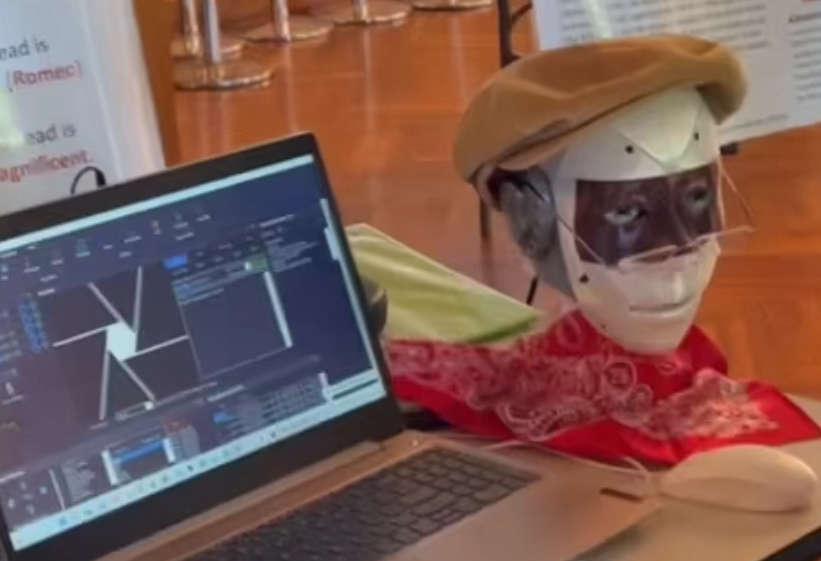Source: The Xavierite
Artificial intelligence (AI) is helpful in many ways, but it is equally harmful. Videos using the voices and likeness of famous individuals are spreading misinformation.
Some of the misinformation isn’t serious, such as Frank Sinatra singing “Gangsta’s Paradise” by Coolio. You also see videos of people commentating over videogames, but their voices are replaced by AI speech of movie characters such as Obi Wan Kenobi or Tony Stark.
Most of these videos are done as forms of entertainment, and are not meant to misinform, but to elicit a laugh. However, what would happen if someone made a video using a correct political figure, such as President Joe Biden? There’s a real concern currently being discussed about AI generated political ads.
Matthew Costello, Ph.D. also spoke about how AI’s presence in creating media using the personas of celebrities, and how it relates to the current strikes happening.
“What about issues or privacy–can your image from a film you were in 20 years ago be appropriated without your consent by the film company for another film later? Who owns your biometric data? These are all issues of legality that need to be addressed and are at the center of the strikes,” Costello stated.
With the amount of misinformation being spread on the Internet, it’s easy to see where all of this could take us. But there’s one area that isn’t being discussed so much. The financial impact on the creative industry. Currently the Screen Actors Guild (SAG) strike has entered its third month, and one of the major sticking points is the use of AI and actors likenesses.
Jim Cummings, the voice actor who plays Winnie the Pooh, stated that he would only allow his voice to be used by AI companies if he received royalties for it.
I wanted to learn more about how AI can replicate the likeness of a human, so I reached out to an Saint Xavier professor who is working with AI technology. Robert Mahoney, an adjunct professor in the department of Chemistry is currently performing hands-on research with AI’s voice synthesis.
This hands-on research consists of two animatronic heads which are plugged into an AI software, one of them being featured in the picture above.
“One of the things we did for the two robot projects was using ElevenLabs to first clone Franklin D. Roosevelt’s voice,” he stated. “We tried to do it for John F. Kennedy, but it didn’t work.”
I found this to be quite inspiring, yet slightly terrifying. Hearing a live speaking voice of someone who died nearly eighty years ago gave me shivers down my spine. What widened my eyes was that it was openly responding to the prompts given by Mahoney.
I do not think AI is going away. Its capabilities are only being tested, and a lot of money is being invested into this growing and evolving industry.
According to Mahoney, “The only thing that’s gonna push AI back is hardware.” Physical technologies such as circuits and boards are currently scarce, but it is very likely that more will be available in the near future.
When it came to the topic of misinformation being created and spread using AI, Mahoney responded, “Will it cause havoc and mayhem? Well, I think the jury’s out on that one.”
AI reminds me of the story of Frankenstein. An egotistical scientist, creates a man from dead bodies, and it ultimately leads to his downfall. But he never asks an important question. Just because we can do something, does it mean we should? Are we turning into Frankenstein, and AI will be our creature?

